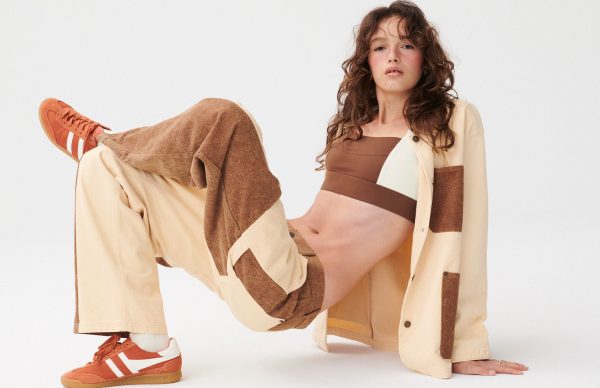With soaring temperatures and sweltering parisian sun, with a backdrop of taxi strikes and Courtney Love kidnappings, the men’s shows opened on a typically dramatic scene (it’s Paris, come on). Taking the relay from the tightly tailored chaps at Milan Fashion Week, Paris introduced volumes, lengths and more relaxed cuts – as well as a healthy dose of colour. With highlights from Issey Miyake MEN, Yohji Yamamoto and Dries Van Noten, here’s our low-down on the opening days of Paris Fashion Week Men.
To start off the proceedings, Haider Ackermann’s man was a svelte one – in true ‘50s form – cinched, bandaged, knotted and belted into perfect high-waists. With an added touch of glamrock, and tauntingly tight legs, the layers of lines, dots, and generally Ackermannesque prints, the collection was unbelievably elegant and whimisical. Something to dream away the sun-soaked Parisian evening to.
Taking Bowie’s Moonage Daydream as a starting point, Walter Von Beirendonck crafted a psychedelic collection – one that was as free graphically as it was structurally. With trousers in the forms of Oxford bags, and tailoring reinvented with inserts of cockerel heads, stars, stripes, latex and an extraordinary compilation of seemingly haphazard (yet obviously carefully orchestrated) items, the collection was a truly postmodern show, in true Bowie style.
A global consensus could establish that cuts and shapes seem to be going longer, thinner and more and more sleek this season of shows: Phillip Lim championed the silky-smooth draped effect in his spring/summer 2016 collection. Stripes elongated forms, whilst rococo prints added a certain regal air, all the while keeping the pieces decidedly modern with blocks of white, olive and blue.
Yusuke Takahashi’s Issey Miyake MEN collection took us on a tropical tour – one that explored the rich and varied undergrowth in dark greens, reds and blues, and headed to the skies with an explosive bird (parrots, to be precise) print. With neckerchiefs a plenty, and ample volumes, the show was a breath of fresh air – in the lush, green heart of the Musée du Quai Branly’s gardens.
If a soundtrack ever set the show’s audience off, it was that of Yohji Yamamoto’s show: to the Bond theme tune, models strode out in signature voluminous trousers and tightly tailored jackets – with hand-painted motifs painstakingly recreated in stitchwork. A sort of deconstruction of the male archetypes (with tailoring so tight it almost traumatises), Yamamoto presented his own vision of masculine performance – one that’s not averse to a crumpled suit, nor taken aback by slouchy shoulders. In short, the collection was nothing short of brilliant, in true Yamamoto form.
Technical jerseys, leather and chainmail-like knits emerged out of the dark depths of the Palais de Tokyo. Boris Bidjan Saberi’s industrial signature, in short, was alive and well: his stretched silhouettes, with signature drop-cotch looks, raged to the booming soundtrack, making the show an aggressively brilliant rejection of classic menswear. A welcome break in the saccharine sweet succession of shows.
Denim took centre place at the JUUN.J show, with materials and structures confounded in a glorious display of oversized pieces. Classic items, such as a trench, were rediscovered in bigger, bolder proportions, blurring the usual lines with the use of not so classic materials.
Silver screen icons inspired a dapper Dries Van Noten collection, with icons of the likes Marilyn adorning lapels, shirts – and introducing a precedently unexplored dose of glitz and glam to the Van Noten designs. To the soundtrack of Salvador Dalì’s musings, boyish figures in silken volumes emerged in the vast warehouse, enveloping the poetically reimagined decades gone by – with icons meeting in a surreal, yet surprisingly delicate, collection.
Words / Patrick Clark
Follow him on Twitter.
Discover the latest issue of Schön!.
Now available in print, as an ebook, online and on any mobile device.




















































































































